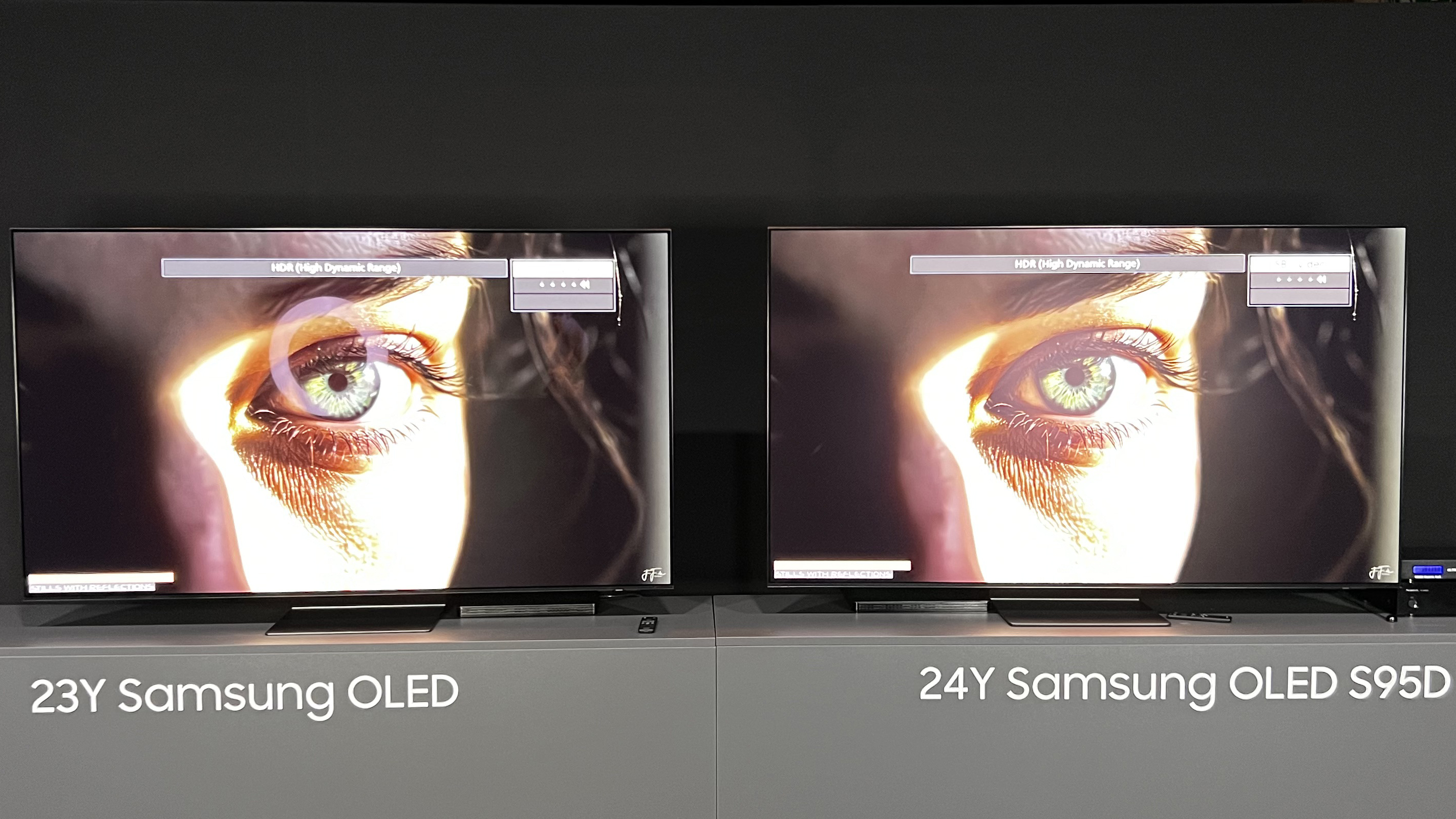Samsung's new anti-reflection OLED TV screen is a modified version of The Frame TV's wild matte display, and it may come to more TVs if it's successful

The Samsung S95D is the company's next flagship OLED TV, and it comes with a new anti-reflective display that's quite impressive – I saw the S95D's new screen in action at CES, and it was a clear upgrade over last year's Samsung S95C model for being easier to watch when there's something bright nearby. At the time, Samsung confirmed that the S95D would be the only model with this new tech.
Recently, I got a further demonstration of the new screen and also had some details confirmed about this new tech – including the fact that nothing is forcing it to be exclusive to the Samsung S95D. It's a coating on top of the screen, and the company said it could be brought to any other TV Samsung makes without really affecting the cost of the TVs, but it's being launched on just one TV now to see how well it's received. If everyone loves it, we could see a lot more of it from 2025.
The 'Glare-Free' screen, as Samsung calls it, is a modified version of the matte display used on Samsung's 2023 version of The Frame TVs. If you've seen this in person, you'll know that it's a very strange thing to see compared to what all other TVs are like – in a good way. The matte panel removes the 'glossiness' we're used to on TVs, which robs the panel of a little of its punchiness and raises black levels at times, but in exchange it makes it feel much less like a 'screen' when you're looking at The Frame's art mode. And that's mostly because this display is extremely anti-reflective.
How it works
The version used on the S95D is a less extreme matte coating than is used on The Frame to make sure that the QD-OLED screen's darker tones aren't elevated too much and to keep the colors popping. But it still has a major anti-reflective effect – it basically removes the 'shape' of the reflections, meaning a dot of light from a bulb becomes just a smear of light on the screen, which has two advantages.
First, with no defined shape to the reflection, your brain is much less likely to be distracted by it. Contrast and hard edges are a key part of how human sight works, and removing both of these, reflections interfere with the image far, far less. Second, a big problem with reflections on the screen is that they're in a different plane of focus to the pixels. If you're sitting six feet away from a screen that's reflecting you back at yourself, then every time your eyes are distracted by your reflection, your eyes have to refocus from looking at something six feet away (the image on the pixels) to something 12 feet away (your reflection). So that's doubly distracting, and tiring on the eyes. Again, with no defined shape to the reflection, it doesn't appear to be on a different focus plane – there's nothing to focus on at all.
Here's what that looks like in practice, with the S95C on the left without the new Glare Free coating, and the S95D on the right with it. Both TVs are facing an identical ring light that's positioned to be visible from this angle.

As you can see, the image on the S95D is still affected by the light. The picture overall has been elevated, with black tones looking more gray, and the lighter parts looking less bright and less natural – but it's massively preferable to the image on the left, in my opinion, where the clear image of the ring light actively obscures some of the detail on-screen, especially in motion. It's so much more distracting.
Sign up for breaking news, reviews, opinion, top tech deals, and more.
Samsung assured me that the elevated dark tones from the matte screen shouldn't be noticeable if you're watching in a dark room with more controlled lighting, so it sounds like a fair trade-off – we'll have to wait for our full review of the S95D to be the final judge of that.
I hope it works out well because I think the raising of the image's dark tones is well worth the reduction in distraction, and it's especially exciting that the coating apparently wouldn't add to the cost of the TVs meaningfully because this would be especially useful on Samsung's less bright TVs, which tend to be its more affordable ones. I've said before that I think anti-reflection screens could be the next big battleground for TVs, and we could see that heat up in 2025.
You might also like

Matt is TechRadar's Managing Editor for Entertainment, meaning he's in charge of persuading our team of writers and reviewers to watch the latest TV shows and movies on gorgeous TVs and listen to fantastic speakers and headphones. It's a tough task, as you can imagine. Matt has over a decade of experience in tech publishing, and previously ran the TV & audio coverage for our colleagues at T3.com, and before that he edited T3 magazine. During his career, he's also contributed to places as varied as Creative Bloq, PC Gamer, PetsRadar, MacLife, and Edge. TV and movie nerdism is his speciality, and he goes to the cinema three times a week. He's always happy to explain the virtues of Dolby Vision over a drink, but he might need to use props, like he's explaining the offside rule.